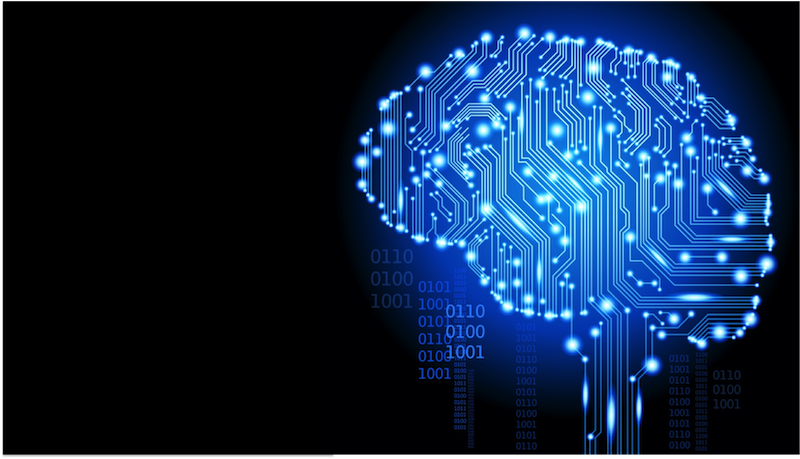AI, Machine Learning, Deep Learning, Neural networks, NLP…What are they?
Artificial Intelligence (AI) is the intelligence that the machine develops from learning (Machine Learning). The education process starts with a lot of training data. With days of (machine) learning, it gains knowledge and becomes intelligent.
Ex. Let’s say you want the machine to spot cars in all photographs. You train it with pictures of cars – thousands and millions of car pictures – different views of the car – top view, side view and so on. It is also trained with pictures of things that are not cars. And at the end of the training, it would have learnt what constitutes a car and what doesn’t and should be ready to identify cars. Now, when the machine is fed new data to test the learning, it starts identifying cars in the photographs. Over time, with more training data on the context (for example roads, beach, cities, etc), it starts not just identifying cars, but also recognizing the context (ex. car on a road).
Deep learning is an extension of the machine learning where the computer becomes autonomous, self-teaching system. For example, when programmed to search the internet, it starts collecting training data from the internet instead of waiting to be fed training data. It starts learning from its mistakes (wrongly identifying the make of a car for example), and, starts looking for differentiators.
With more access to variety of data and more learning, its neural networks start tagging various elements in a photograph and auto classifying content. What has happened is that the machine starts thinking and making sense of the world much like humans (data – information – knowledge – intelligence)
A Neural Network is a computer system designed to work by classifying information in the same way a human brain does. It can be taught to recognize, for example, images, and classify them according to elements they contain.
Natural Language Processing (NLP) is a module of machine learning where it is fed with ‘language data’ to understand the nuances of human conversation. At the end of the learning, it is now ready to understand conversational speech. So when the user asks, ‘show me all the red car pictures in my albums’, all the red car images are pulled out from thousands of pictures in your album. It is almost like magic – the machine just knew it even without you tagging the images.
Some of the players in the AI space
- Google (DeepMind, Brain)
- Facebook (facial recognition, help blind ‘ see’ photos using a description for each photo)
- IBM (Watson)
- Amazon AWS (Sagemaker, DeepLens)
- Apple (acquired VocalIQ, Emotient)
- Salesforce (MetaMind)
- NVDIA (in Healthcare)
- Uber (acquired Geometric Intelligence)
- Microsoft (Ventures funded Element AI, Agolo, Bonsai)
- Microsoft Skype (real-time language translation of speech to text as you speak)
- Baidu Research
- OpenAI (non-profit AI research)
AI on the cloud and Machine Learning as a Service
Machine learning as a service enables customers to leverage the potential of built-in machine learning capabilities of the various cloud platforms to gain insights from their data without having to write training algorithms on their own.
Some of the key players in this space
Amazon AWS:
Amazon Web Services has an off the shelf AI package – Sagemaker that makes it easy to build, train, and deploy machine learning models. It also has a host of machine learning services like Transcribe (transcribes speech to text),Translate (translate text between languages),Comprehend (extract insights from text), Rekognition (analyze videos)
AWS DeepLens is the world’s first deep learning-enabled wireless video camera built to give developers hands-on experience with machine learning.
Microsoft Azure:
Microsoft Azure’s Machine Learning Studio has an open-source deep-learning library called Gluon that works a lot like Google’s TensorFlow and is meant to make it as easy to build and train neural networks as it is to make an app.
Google Cloud:
Google’s Cloud AutoML uses TensorFlow framework, an open-source AI software that can build other machine-learning software.
The Outcome
Now that the machine has become intelligent with all that learning, what does it do next? It starts predicting and making intelligent recommendations.
Let’s say you were reading up on Gaudi, looking at travelogues on Europe, researching on Spain’s weather in June, looking for reservations at elBulli, searching for pictures of Sagrada Familia, checking out for best churros places in Barcelona – the machine is learning from various sources, that a travel to Spain is imminent, and tempts you with hotel deals in Barcelona for June, Architectural Tours of Gaudi’s works, the Gothic Quarters and a host of intelligent recommendations on based on the data it gathered based on your searches over time.
That was just a simple example, here are a few more…
- Netflix Recommendations
- Facebook Newsfeed
- Facebook Photo-tagging
- Facebook (identifying suicidal intent in posts)
- Google Photos
- Gmail Smart Reply
- Tesla auto-pilot
- Wolfram Alpha
- Skype Translator
- DeepMind’s AlphaGo (deep learning system that has been taught to play and win the board game ‘Go’)
- Sentiment Analysis (Brandwatch)
- Semantic Search (Yummly)
- Microsoft (AttnGAN uses AI to create fake photos from words)
There are tons of things that the machine can do, or is already doing when fed with data and taught how to connect them for meaningful inferences – the more it learns, the more intelligent its predictions and recommendations.
…And that was my attempt at simplifying these concepts for my own understanding.
